Before starting baby CPR: danger, response, send for help
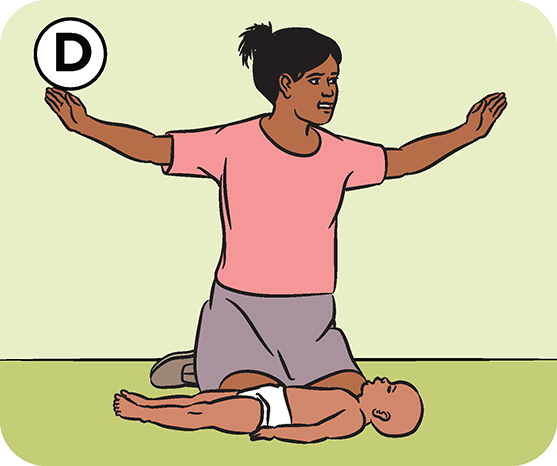
Danger
Check around you for danger. Remove the baby and yourself from danger.
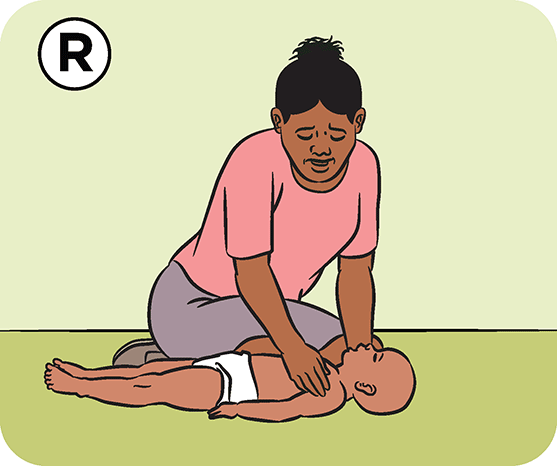
Response
Check the baby for a response. Talk loudly, tap the baby, or gently squeeze their shoulders. See whether the baby opens their eyes, moves or cries.
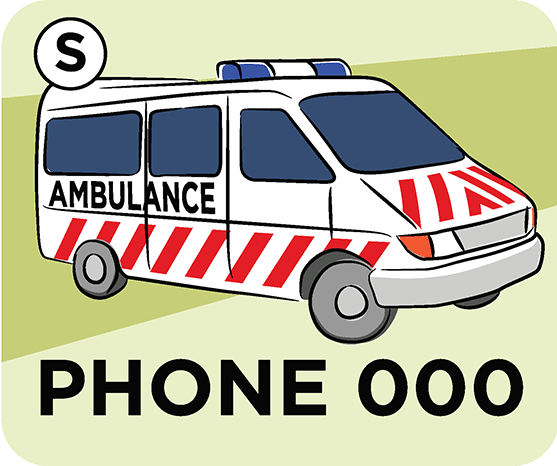
Send for help
If the baby isn’t responding or is breathing abnormally, call 000 for an ambulance.
Next steps: airway, breathing
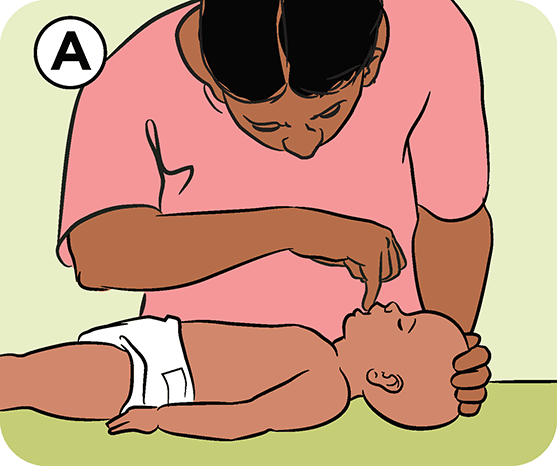
Airway
Check the baby’s mouth for airway blockages like food, vomit or blood. Use your little finger to clear any blockages. But don’t put your finger into the back of the baby’s throat.
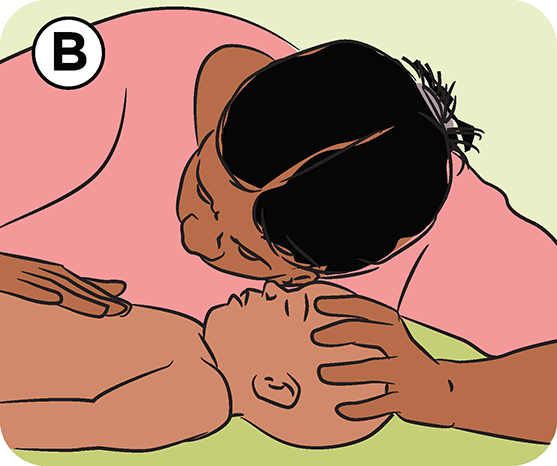
Breathing
Check for breathing. Look for chest movements, listen for breathing sounds from the baby’s mouth and nose, or feel for breath on your cheek.
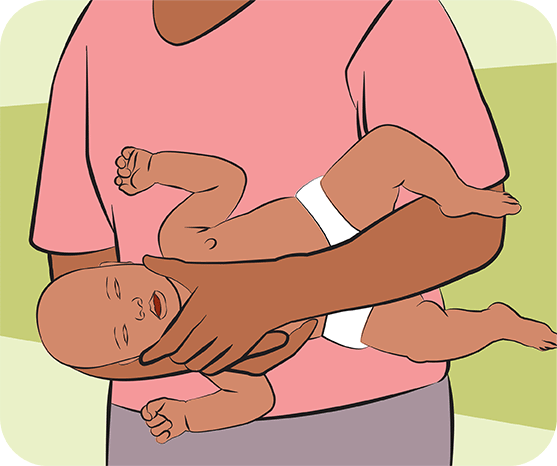
Baby breathing?
Place the baby in the recovery position on their side with their head tilted down. Check the baby regularly for breathing and responses until the ambulance arrives.
Baby not breathing?
Start CPR.
Start baby CPR

CPR
Place the baby on a firm surface on their back. Put 2 fingers in the centre of the baby’s chest, between their nipples. Do 30 compressions – 2 compressions per second. Each compression should push the chest down by about one-third.
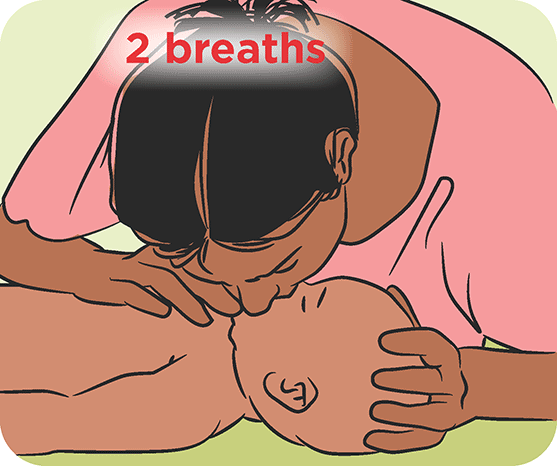
Hold the baby’s head so that their chin doesn’t drop and their head is tilted slightly upwards. Take a breath, and seal the baby’s mouth and nose with your mouth. Blow gently for one second, and watch for the chest to rise. Watch, listen or feel for air leaving the baby’s chest. Take another breath and repeat.
If the baby’s chest doesn’t rise and fall, check again for blockages.

Keep giving 30 compressions followed by 2 breaths until medical help arrives. If the baby starts breathing and responding, put the baby into the recovery position. Keep watching the baby’s breathing.
Be ready to start CPR again at any time.